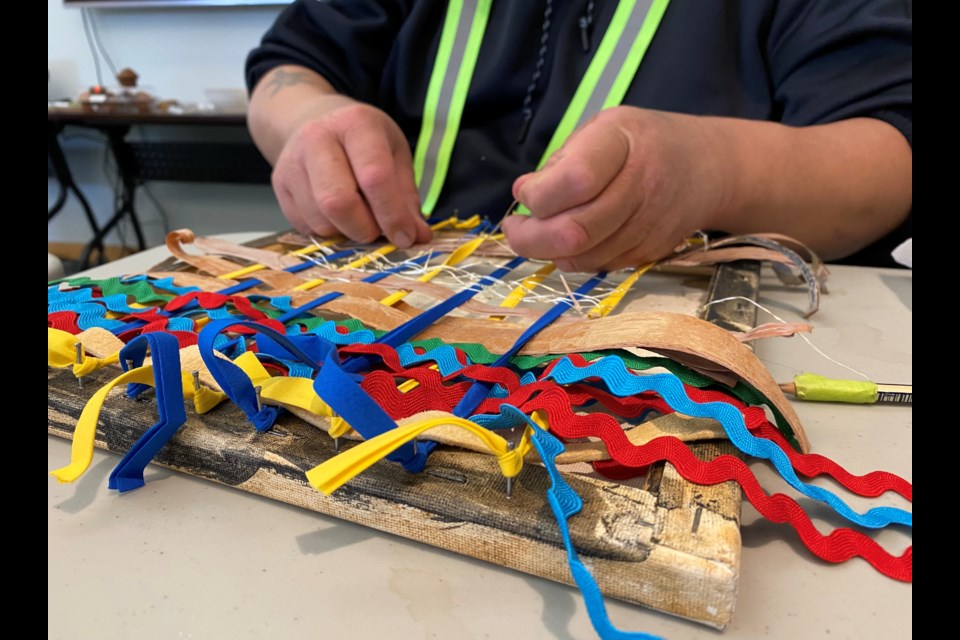THUNDER BAY — "Art projects like this are the antidote to isolation," said Kai Crites, one of the Canadian National Institute for the Blind participants in an accessible art exhibit that opens Sept. 6.
"Having people I can connect with and enjoy life experiences has given me strength," the Thunder Bay resident stated in reference to a project that brings together a mix of people with different backgrounds who share the common experience of being blind or having low-vision.
The Dream Weaver Project will run until Sept. 18 at CoLab Gallery + Art Centre in the Goods and Co. building at Red River Road and Court Street.
It includes the works of over a dozen people who explored different tactile mediums through weavings inspired by materials used by Indigenous Peoples.
Conceived and guided by artist, educator and environmentalist Betty Carpick, the project celebrates the creativity, dignity and resilience of individuals living with sight-loss, not only through sensory artmaking but also through storytelling.
It's a natural followup to the skill-building, experiences and relationships developed during Carpick's The Wild Rainbow Project last year, when participants explored ways to experience colour.
"There's quite a few Indigenous people in the group, and I'm Cree and eastern European," she said in an interview this week.
"And I wanted to kind of explore the materials that were used by Indigenous people in the past, how they changed through colonization, and what connects us with materials in the future."
The artwork is made from birch bark, charcoal sticks from alder carbonized over a fire, ink made from chaga (a fungus that grows on birch trees), smoke-tanned moose hide, rick rack that's often seen on ribbon skirts, and wool.
Carpick said some more modern materials were also used.
"With the future, we started using things like wire, and then we decided to use some twinkly lights and weave those in. We decided on the materials with the group as a whole . . . Pretty much everybody used all of them, so they're kind of an amalgamation of past, present and future."
She said she appreciates the learning opportunity the project has given her.
"My time with the sight-loss group has impacted my view of accessibility and helped me see how we can do much better as a society to be inclusive. This group has taught me to see in a way that's truly humbling."
A second component of the project gave the artists the option of participating in a sound recording based on the prompt 'What gives you strength and resilience?'
Zoe Gordon, a media artist focused on sound, taped the responses that will be played in a loop at the exhibit.
Carpick said she hopes spectators come to a better understanding of the need to expand inclusivity and accessibility in the community and beyond.
"Each one of us is able-bodied until we're not. It could be something like breaking a wrist to something more significant. Our society is very ableist, and I just feel like the project sort of celebrates that there is a lot of abundant beauty, there's a lot of skill, and it recognizes the sight-loss group for the amazing people that they are."
The opening night reception for The Dream Weaver Project takes place from 6 to 9 p.m. on Sept. 6.
The project was supported by the Dr. S. Penny Petrone Fund, the John Rafferty Memorial Fund, and the Thunder Bay Community Foundation.
